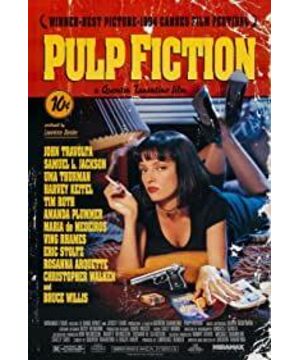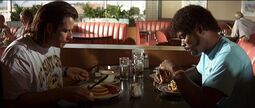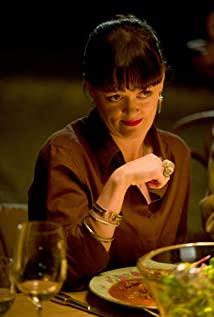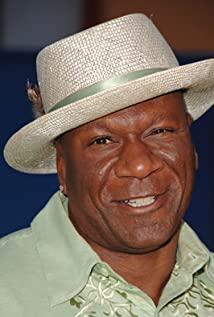Quentin Tarantino is known as the world's number one "fan director". Each of his films is full of "fandom complex". He "steals the teacher" by deconstructing, imitating, paying tribute, and borrowing in the film. The works of predecessors (not limited to film works, including literary works, music works, etc.), and cleverly mixed them, thus forming their own unique film style.
"Pulp Fiction" is a master of "Quentin's style". Almost every shot and every detail in the film can be found at the source. The whole film is almost a history of Quentin's personal fandom.
The following "textuality" is just a little bit.
1. The origin of the title
Literary magazines that published "Pulp Fiction" were popular in the United States in the 1930s and 1940s. Among them, the most famous magazine is "Black Mask." Many master detective writers, such as Raymond Chandler and Daschel Hammett, have published works in this magazine.
Although "Black Mask" and other magazines are "vulgar", they are also places where many well-known writers make their debuts. Therefore, these magazines sometimes publish good works on crime themes.
The so-called "pulp fiction" generally refers to cheap novels that mainly sell violence, pornography, and horror. When I was a teenager, some small bookstores or book stalls in the county town also sold magazines of unknown origin. The "novels" in these magazines should be similar to the "pulp fiction" of the year.
The three stories in "Pulp Fiction", "Vincent and Martha's Wife" are about "pornography", "Golden Watch" is full of "violence", "Bonnie's situation" is considered "pornography" and " The intersection of "violence", they put together, very much in line with the characteristics of "pulp fiction".
2. Godard's "Outlaws" (1964)
Whether you like Godard or not, you can't deny that he is one of the greatest innovators in film history. Quentin is also one of the important innovators in the history of film, and it is only natural for him to regard Godard as an idol.
To what extent Quentin "fans" Godard is "fan", you can see the logo of his production company he typed in the opening of "Pulp Fiction".
The logo of this logo comes from his previous work "Falling Water Dog", and the name of the production company comes from Godard's 1964 masterpiece "Outside the Law".
The name of Quentin's production company is "A BAND APART", and the French name of "Outlaws" is "Bande à part". This is no coincidence. This is Quentin's bow to Godard-"God is here, brother is polite."
3. Godard's "A Woman Is a Woman" (1961)
The "Boss Woman" Mia in "Pulp Fiction" is undoubtedly one of the most important roles in Uma Thurman's acting career. Mia's hairstyle and Mia's rabbit dance have become important labels in the history of movies.
Both Mia’s hairstyle and Mia’s rabbit dance come from Godard’s "A Woman Is a Woman". Mia is also inspired by "A Woman Is a Woman" as a "fashionable beauty".
John Travolta was once the prince of Hollywood dance. When the bunny dance was popular all over the world, many viewers thought it was an improvisation by John Travolta-what an honor it was to "back the pot."
4. Truffaut's "Juul and Jim" (1962)
Truffaut and Godard can be said to be the Gemini constellations of the "French New Wave", although they have turned from "you in you and you in me" to antagonism.
Quentin loved Godard, but he did not forget to give Truffaut an eyebrow.
In the film, Jules and Vincent are a pair of "killer partners." After they got into trouble in the car, they came to the home of Jules' former partner Jim (played by Quentin himself) for help.
Jules and Jim are actually Truffaut's "Jules and Jim".
5. Film noir
The American "film noir" in the 1940s was also one of Quentin's favorite "genres".
In order to pay tribute to the film noir, Quentin did not hesitate to use an unconventional technique to film a scene where the boxer escaped in a taxi.
The so-called unconventional, there are mainly two:
First, the type of taxi in the film is in the 1940s, which does not match the time when the story in the film took place.
Second, the ancient "background shooting" is used, that is, the background outside the car seen in the taxi is not a real scene, but is projected on the screen behind the car. This method of shooting was very common in noir films in the 1940s, but it has almost disappeared after the 1960s. The reason why there was such an obvious way of shooting is because it was very difficult to ensure the smooth shooting of the camera in the car.
6. Bad priest and "Hunter's Night" (1955)
In "Pulp Fiction", the killer Jules likes to read a "Bible" quotation before killing.
Such a unique killer and such a ridiculous way of killing naturally made this paragraph a "joke" that countless fans talk about.
Although Quentin's "bridge section" is original, it is not water without a source.
The classic film noir "Hunter's Night" in 1955 portrayed an evil priest who was dignified and lost in the lotus mouth.
The role of Jules has no obvious resemblance to the bad pastor, but they are the same in killing people in the name of the Bible.
7. Structure: "Black Sabbath" (1963)
"Ring structure" and "multi-line narrative" are the most direct perceptions of "Pulp Fiction" by the majority of movie fans. This is also a very interesting part of "Quentin Style".
Quentin is a "master of deconstruction" in the history of film, but also a "master of structure". In addition to the three works of "Falling Water Dog", "Jackie Brown" and "King Kong Isn't Broken", Quentin's other feature films have very special works. Intuitive "chapter structure"-in fact, all his works have a subtle structure, but they are explicit and implicit.
Quentin himself emphasized: "I am a writer!"
Yes, he does use "chapters" to construct his films like a novelist.
Specific to "Pulp Fiction", its "chapter structure" does not come from the "writer" Quentin, but from the "fan" Quentin-an unpopular B-level film "Black Sabbath" gave Quentin direct " Enlightenment".
"Black Sabbath" is a B-level horror film consisting of a prologue, three chapters and an epilogue. This structure is basically the same as that of "Pulp Fiction".
In fact, the structure of "Pulp Fiction" is a fully upgraded version of "Black Sabbath", because Quentin added a lot of "connection points" and "junctions" in each "chapter", and the chapters of "Black Sabbath" The connections and intersections are not obvious.
"Black Sabbath" can only be regarded as mediocre in the B-level film. Quentin's extraordinary talent lies in his ability to turn "corruption" into magic!
8. Lens language
The lens language in "Pulp Fiction" is also a "hodgepodge".
for example:
"French New Wave"-style long shot: In Chapter 1, Jules and Vincent take the elevator to "do errands". Before reaching the destination, they have been chatting. The theme is "The Boss Woman". The whole paragraph is more than two minutes. Zhong, the character has been "shifting", but "one mirror to the end".
Documentary handheld shooting: Rescue Mia who overdose on drugs. All the panic and confusion are also represented by a long lens, which is very "fan" for documentary filming.
Leone-style close-up: Needless to say, when Quentin is on the set, on a whim, he will say: "Bring me a Leone-style close-up."
Bathroom Mirror: Like many film masters, Quentin also likes to use "mirror" in his films.
Rear box perspective: In American gangster movies, the rear box perspective is relatively common, and Quentin is no exception.
...
9. Violent aesthetics
Quentin has become a master of "violent aesthetics".
His pedigrees are also very complicated, including Sam Pekinpa ("Sunset Yellow Sand", etc.), De Palma ("Scarface", etc.), Wu Yusen ("Bloodblood Duo", etc.), Western Italy Movies, Shaw Kung Fu movies, Japanese samurai movies, all kinds of B-rated movies, etc.
10. Tabard
Melville has a trench coat, Leon has a cloak, Quentin's "Tank" is a suit and tie, so does the gangster in "Falling Dog", and so does the killer in "Pulp Fiction."
Gangsters in Japan generally wear suits. I wonder if Quentin was inspired by it?
11. Quentin's golden sentence and Quentin's private goods
"I hope that a million people will read Pulp Fiction and have a million opinions."
"Treat actors as stars, and treat stars as actors."
Quentin is a director who likes to carry private goods very much.
Brands such as "Red Apple" cigarettes appear in the film, which are "brands" "created" by Quentin.
The wallet with "BAD MOTHER FUCKER" printed on it is Quentin's belongings.
The motorcycle that the "Gold Watch" boxer snatched had "GRACE" printed on the fuel tank. It is said that this was the name of Quentin's girlfriend at the time.
...
12. Quentin's positive energy
If I say "Pulp Fiction" is a "positive energy" movie, you will definitely think I am "nonsense".
But, in fact, "Pulp Fiction" is really "positive energy".
The characters in the film come from multiple races, and the characters of different races can cooperate and help each other. Quentin has achieved the "racial integration" in one movie.
The film refers to "cultures" from all over the world and combines them together. It can be said that Quentin presents "cultural diversity" in one film.
View more about Pulp Fiction reviews











